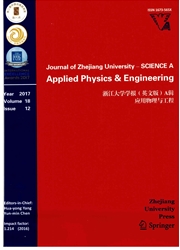

 中文摘要:
中文摘要:
研究目的:以空间相关系数、降雨最和降雨次数为指标,利用实测的气象数据,评估一个新的多站天气发生器GiST在中国东部钱塘江流域模拟降雨的性能。任此基础上,结合全球气候模式Hadgem2-ES,分析在浓度路径RCP8.5下GiST模拟2071-100年的降雨情况。
 英文摘要:
英文摘要:
Recent years have seen a surge in assessment of potential impacts of climate change. As one of the most important tools for generating synthetic hydrological model inputs, weather generators have played an important role in climate change impact analysis of water management. However, most weather generators like statistical downscaling model (SDSM) and long Ashton research station weather generator (LARS-WG) are designed for single site data generation. Considering the significance of spatial correlations of hydro-meteorological data, multi-site weather data generation becomes a necessity. In this study we aim to evaluate the performance of a new multi-site stochastic model, geo-spatial temporal weather generator (GIST), in simulating precipitation in the Qiantang River Basin, East China. The correlation matrix, precipitation amount and occurrence of observed and GiST-generated data are first compared for the evaluation process. Then we use the GiST model combined with the change factor method (CFM) to investigate future changes of precipitation (2071 2100) in the study area using one global climate model, Hadgem2 ES, and an extreme emission scenario RCP 8.5, The final results show that the simulated precipitation amount and occurrence by GiST matched their historical counterparts reasonably. The correlation coefficients between simulated and his- torical precipitations show good consistence as well. Compared with the baseline period (1961 1990), precipitation in the future time period (2071-2100) at high elevation stations will probably increase while at other stations decreases will occur. This study implies potential application of the GiST stochastic model in investigating the impact of climate change on hydrology and water resources.
 同期刊论文项目
同期刊论文项目
 同项目期刊论文
同项目期刊论文
 Design rainfall depth estimation through two regional frequency analysis methods in Hanjiang River B
Design rainfall depth estimation through two regional frequency analysis methods in Hanjiang River B 期刊信息
期刊信息
